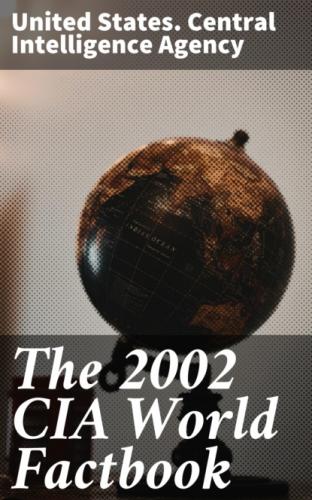Geography Cambodia
Location: Southeastern Asia, bordering the Gulf of Thailand, between
Thailand, Vietnam, and Laos
Geographic coordinates: 13 00 N, 105 00 E
Map references: Southeast Asia
Area: total: 181,040 sq km land: 176,520 sq km water: 4,520 sq km
Area - comparative: slightly smaller than Oklahoma
Land boundaries: total: 2,572 km border countries: Laos 541 km, Thailand 803 km, Vietnam 1,228 km
Coastline: 443 km
Maritime claims: contiguous zone: 24 NM territorial sea: 12 NM continental shelf: 200 NM exclusive economic zone: 200 NM
Climate: tropical; rainy, monsoon season (May to November); dry season
(December to April); little seasonal temperature variation
Terrain: mostly low, flat plains; mountains in southwest and north
Elevation extremes: lowest point: Gulf of Thailand 0 m highest point:
Phnum Aoral 1,810 m
Natural resources: timber, gemstones, some iron ore, manganese, phosphates, hydropower potential
Land use: arable land: 21% permanent crops: 1% other: 78% (1998 est.)
Irrigated land: 2,700 sq km (1998 est.)
Natural hazards: monsoonal rains (June to November); flooding; occasional droughts
Environment - current issues: illegal logging activities throughout the country and strip mining for gems in the western region along the border with Thailand have resulted in habitat loss and declining biodiversity (in particular, destruction of mangrove swamps threatens natural fisheries); soil erosion; in rural areas, a majority of the population does not have access to potable water; toxic waste delivery from Taiwan sparked unrest in Kampong Saom (Sihanoukville) in December 1998
Environment - international agreements: party to: Biodiversity, Climate
Change, Desertification, Endangered Species, Hazardous Wastes, Marine Life
Conservation, Ozone Layer Protection, Ship Pollution, Tropical Timber 94,
Wetlands signed, but not ratified: Law of the Sea, Marine Dumping
Geography - note: a land of paddies and forests dominated by the Mekong
River and Tonle Sap
People Cambodia
Population: 12,775,324 note: estimates for this country explicitly take into account the effects of excess mortality due to AIDS; this can result in lower life expectancy, higher infant mortality and death rates, lower population and growth rates, and changes in the distribution of population by age and sex than would otherwise be expected (July 2002 est.)
Age structure: 0-14 years: 40.7% (male 2,646,883; female 2,550,015) 15-64 years: 55.8% (male 3,373,692; female 3,758,736) 65 years and over: 3.5% (male 182,149; female 263,849) (2002 est.)
Population growth rate: 2.24% (2002 est.)
Birth rate: 32.93 births/1,000 population (2002 est.)
Death rate: 10.51 deaths/1,000 population (2002 est.)
Net migration rate: 0 migrant(s)/1,000 population (2002 est.)
Sex ratio: at birth: 1.05 male(s)/female under 15 years: 1.04 male(s)/female 15-64 years: 0.9 male(s)/female 65 years and over: 0.69 male(s)/female total population: 0.94 male(s)/female (2002 est.)
Infant mortality rate: 64 deaths/1,000 live births (2002 est.)
Life expectancy at birth: 59.5 years (2002 est.) male: Total fertility rate: 4.66 children born/woman (2002 est.)
HIV/AIDS - adult prevalence rate: 4.04% (1999 est.)
HIV/AIDS - people living with HIV/AIDS: 220,000 (1999 est.)
HIV/AIDS - deaths: 14,000 (1999 est.)
Nationality: noun: Cambodian(s) adjective: Cambodian
Ethnic groups: Khmer 90%, Vietnamese 5%, Chinese 1%, other 4%
Religions: Theravada Buddhist 95%, other 5%
Languages: Khmer (official) 95%, French, English
Literacy: definition: age 15 and over can read and write total population: 35% male: 48% female: 22% (1990 est.)
Government Cambodia
Country name: Kingdom of Cambodia conventional short form: Kampuchea former: Khmer Republic, Kampuchea Republic
Government type: multiparty democracy under a constitutional monarchy established in September 1993
Capital: Phnom Penh
Administrative divisions: 20 provinces (khett, singular and plural)
and 4 municipalities* (krong, singular and plural); Banteay Mean Cheay,
Batdambang, Kampong Cham, Kampong Chhnang, Kampong Spoe, Kampong Thum,
Kampot, Kandal, Kaoh Kong, Keb*, Kracheh, Mondol Kiri, Otdar Mean Cheay,
Pailin*, Phnum Penh*, Pouthisat, Preah Seihanu* (Sihanoukville), Preah
Vihear, Prey Veng, Rotanah Kiri, Siem Reab, Stoeng Treng, Svay Rieng,
Takev
Independence: 9 November 1953 (from France)
National holiday: Independence Day, 9 November (1953)
Constitution: promulgated 21 September 1993
Legal system: primarily a civil law mixture of French-influenced codes from the United Nations Transitional Authority in Cambodia (UNTAC) period, royal decrees, and acts of the legislature, with influences of customary law and remnants of communist legal theory; increasing influence of common law in recent years
Suffrage: 18 years of age; universal
Executive branch: chief of state: King Norodom SIHANOUK (reinstated 24 September 1993) head of government: Prime Minister HUN SEN (since 30 November 1998) and Deputy Prime Ministers SAR KHENG (since NA) and TOL LAH (since NA) cabinet: Council of Ministers appointed by the monarch elections: none; the monarch is chosen by a Royal Throne Council; prime minister appointed by the monarch after a vote of confidence by the National Assembly
Legislative branch: bicameral consists of the National Assembly (122 seats; members elected by popular vote to serve five-year terms) and the Senate (61 seats; two members appointed by the monarch, two elected by the National Assembly, and 57 elected by "functional constituencies"; members serve five-year terms) elections: National Assembly - last held 26 July 1998 (next to be held NA July 2003); Senate - last held 2 March 1999 (next to be held NA 2004) election results: National Assembly - percent of vote by party - CPP 41%, FUNCINPEC 32%, SRP 14%, other 13%; seats by party - CPP 64, FUNCINPEC 43, SRP 15; Senate - percent of vote by party - NA%; seats by party - CPP 31, FUNCINPEC 21, SRP 7, other 2
Judicial branch: Supreme Council of the Magistracy (provided for in the constitution and formed in December 1997); Supreme Court (and lower courts) exercises judicial authority
Political parties and leaders: Buddhist Liberal Party or BLP [IENG
MOULY]; Cambodian Pracheachon Party or Cambodian People's Party or CPP
[CHEA SIM]; Khmer Citizen Party or KCP [NGUON SOEUR]; National United
Front for an Independent, Neutral, Peaceful, and Cooperative Cambodia or
FUNCINPEC
